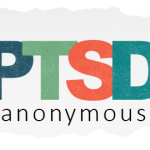
Over the next few weeks we are talking about the the six key ingredients for CRM Planning in 2019 – Read our summary article here
The first ingredient is embracing Agile Project Management. We would recommend that an organisation undergoing a Digital Transformation Project nominates an internal project manager who has an understanding and/or training in Agile Project Management. We explain why below..
“Organizations increasingly embrace agile as a technique for managing projects. A full 71 percent of organizations report using agile approaches for their projects sometimes, often, or always.” (9th Global Project Manageent Survey, PMI 2017)
Agile Project Management evolved in the 90’s with a specific focus on technology projects. Organisations large and small are embracing the new Age of Agile. Non-profits need to adopt it too if they want to achieve success with their Digital Transformation projects.
The Agile approach isn’t just applied to technology projects however, the skills can support the rest of the organisation to develop.
“Senior executives increasingly recognize that “Agile Is Eating The World.” In fact, surveys by both Deloitte and McKinsey show that over 90% of senior executives want to be agile, while less than 10% currently see their own firm as “highly agile.” There are now major efforts under way with “Agile transformations” being planned or implemented in many organisations, both public and private. All the successful software firms are all recognizably implementing the substance of Agile—a focus on delivering value for customers, working in small teams in short cycles, and networked organizational arrangements rather than top-down bureaucracy and silos. (Denning, Forbes 2018)”
Does Agile Project Management Work?
A report by APMG showed..The more that agile methods had been used in a project, the greater the success of that project in meeting all its aims. Read the report to learn more.
Let’s look at the DSDM Manifesto for Agile Software Development.
This is shared by APMG International who deliver accredited certifications the DSDM approach
“We are uncovering better ways of developing software by doing it and helping others do it. Through this work we have come to value:
Individuals and interactions over processes and tools
Working software over comprehensive documentation
Customer collaboration over contract negotiation
Responding to change over following a planThat is, while there is value in the items onatern the right, we value the items on the left more”
Agile is an umbrella term and covers many different variants, it’s not just one methodology.

The DSDM philosophy is that: “best business value emerges when projects are aligned to clear business goals, deliver frequently and involve the collaboration of motivated and empowered people.”
The difference between Agile and Traditional
Most projects have four parameters – time, cost, features and quality. Trying to fix all these parameters at the outset is impractical and is the cause of many common problem.
The Agile approach is based on time and cost being fixed at the outset but not features. Time boxes/sprints are allocated to deliver features/requirements which are prioritised within the time period. The technical detail of these requirements can evolve throughout the project management process and as required additional time will be allocated to this iterative process.
The Agile – DSDM 8 Principles are as follows:
So if we look at practicalities, why is Agile project management the norm for tech agencies and projects:
- There is rarely a detailed technical specification designed upfront so it’s usually impossible and high risk for agencies to give a fixed price on a project when requirements are unknown.
- Technology is advancing all of the time and market conditions are changing, there may be a need to evolve solutions and requirements as needed throughout the life time of the project.
- The client’s often don’t know or understand the technical features available at the outset, so this process enables the users flexibility to evolve their requirements throughout the project as they learn more about their approach.
- Confidence comes from quick-wins so if you can develop a system in stages, this allows users to see and celebrate success in earlier stages without committing to a whole project.
- Typically there is a fixed budget with contingency for a project and it is in the best interests of both the client and consultancy to deliver on high priority requirements for this budget without compromising the working relationship or quality.
- It reduces the risk for both client and partner, as they can choose to allocate and spend resource as needed rather than stick with an upfront plan.
Plan your CRM Strategy for 2019 by joining our Masterclass covering training in our six key ingredients in January – Click here to find out more and book


